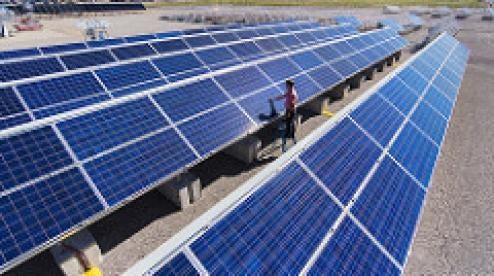In 2013, President Obama issued the Climate Action Plan. Its goal: to reduce greenhouse gas emissions from a broad range of economic sectors. Moreover, the Climate Action Plan is the key set of initiatives necessary to achieve the United States’ GHG reduction commitment set out in the 2015 Paris Agreement, an international accord.
We covered the initiation of a wide range of rulemakings, and, as the Obama Administration comes to a close, climate change rulemakings continue to move forward. The most contentious rule—the Clean Power Plan—has moved from rulemaking to litigation. Many other rules (e.g. new rules limiting methane emissions from the oil and gas industry and the renewable fuel standards) have moved from proposal to final rules. We summarize the status of 10 different rules, standards, or programs meant to implement the Climate Action Plan below.
EPA’s recent climate change rules impose significant regulations on a broad spectrum of the American economy, including the power generation, construction, waste management, automobile manufacture, and aviation industries.
Clean Power Plan
The Clean Power Plan impacts the energy sector by requiring CO2 emission reductions from fossil-fuel fired electric generating units. The Clean Power Plan requires states to submit plans to achieve the reduction goals. The Clean Power Plan (CPP or the Section 111(d) plan) faced immediate challenge upon promulgation on October 23, 2015. 19 petitions challenging EPA’s rule, representing numerous states, industry groups, and nonprofits, were filed on the day it was published. In an unprecedented action, the Supreme Court voted 5-4 to stay the CPP in February 2016. The stay will be in place for at least two years until the D.C. Circuit rules on the pending challenges and an appeal of that decision makes its way through the Supreme Court. States do not need to meet any of the CPP deadlines while the stay is in effect.
All lawsuits challenging the CPP are consolidated in West Virginia v. EPA, Docket 15-1363, in the D.C. Circuit Court of Appeals. The challenges include both procedural and substantive issues. Briefing in the matter was complete in April 2016. And on May 16, 2016, in an unorthodox move, the D.C. Circuit Court of Appeals on its own motion issued an order to delay oral argument and hear the case en banc. Oral arguments are now set to begin on September 27. A decision is not expected until after the 2016 election so the D.C. Circuit’s decision will not be an election issue, although the existence of the “war on coal” will be.
Among the chief challenges: whether the Clean Air Act gives authority to regulate shifts in electric generation from a CO2-emitting source (regulated source) to a zero-emitting source (an unregulated source); and whether the final rule differs so substantially from the proposed rule that it violates the notice-and-comment requirement of the Administrative Procedure Act. The CPP is accessible here.
CO2 Emission Limits for New, Modified and Reconstructed Power Plants
Late last year, on October 23, 2015, EPA set standards to limit CO2 emissions from new, modified, and reconstructed power plants. The final rule establishes two emission standards: one for newly constructed electric generating units that fire natural gas and a second one for those that fire coal. The rule became effective on December 23, 2015. No judicial stay is in effect.
The rule is also controversial. On May 6, 2016, EPA denied administrative petitions to reconsider the rule. Consolidated challenges to the new, modified, and reconstructed rule are being heard in the D.C. Circuit Court of Appeals in State of North Dakota et al. v. EPA, Docket No. 15-1381. In light of EPA’s denial, on June 24, 2016, the D.C. Circuit Court of Appeals suspended the briefing schedule and set a deadline of July 12 for motions to consolidate and August 4 for motions to amend the briefing schedule. Thus, legal challenges to the NSPS will not be resolved until well into 2017.
The rule affecting new, modified, and reconstructed electric generating units is accessible here.
Federal Plan Requirements to Implement the CPP
EPA proposed the Federal Plan for the CPP at the same time that it finalized the two rules above. The Federal Plan contains a complex series of emissions trading rules and sets forth the requirements that EPA would impose on a state if it failed to develop its own Section 111(d) plan. The trading rules are also intended to be “models” that the states may adopt to implement the CPP. If a state does not adopt them or develops an insufficient Section 111(d) plan, EPA intends to impose these trading rules on the state. Additionally, the proposal contains provisions to fix errors or omissions in the CPP. While EPA has taken comment on the federal plan, EPA does not expect to finalize the plan in light of the Supreme Court stay of the CPP. The proposal can be found here.
Proposed Rulemaking to Implement the Clean Energy Incentive Program
Despite the Supreme Court’s stay of the CPP, on June 16, 2016, EPA released a new rulemaking proposal that focuses on the design details of the Clean Energy Incentive Program (CEIP), an aspect of the CPP finalized last October. The CEIP is an optional incentive program for early investments in renewable energy and energy efficiency projects. Two categories of projects qualify when they either generate carbon-free megawatt hours or reduce demand-side energy use during 2020 and/or 2021: (1) renewable energy generation; and (2) demand-side energy efficiency projects in low-income communities. The proposal makes two notable changes to the CEIP categories finalized in the CPP. First, EPA added geothermal and hydropower as eligible renewable energy projects, and, second, EPA added solar to the list of qualifying energy efficiency projects. States that opt into the CEIP must set aside emissions reductions credits from the interim compliance period, thereby reducing the credits that would otherwise have been available to affected EGUs during that time period. EPA published the proposal on June 30, 2016, and is accepting public comments through August 29, 2016.
Oil and Gas Methane Emissions Reduction Rules and Voluntary Program
On May 12, 2016, EPA finalized the first Clean Air Act rules limiting methane emissions from new and modified oil and gas infrastructure by updating the New Source Performance Standards for the oil and gas industry. The new rules are wide-ranging. Affected sources must find and repair leaks, capture gas from hydraulically fractured (fracking) wells, limit emissions from new and modified pneumatic pumps, and limit emissions from several types of equipment used at gas transmission compressor stations, including compressors and pneumatic controllers. Owners or operators of fracking wells must capture natural gas instead of letting it escape into the air. This process is known as “green completion,” and owners or operators must use it by October 12, 2016. You can access the final rule here.
EPA also finalized a Federal Implementation Plan (FIP) for its Indian Country Minor New Source Review (NSR) program targeting oil and natural gas production sources. EPA required tribes administering the Clean Air Act to establish minor NSR programs in 2011. Tribes that have not implemented acceptable programs yet will be subject to EPA’s FIP. The FIP provides guidance on air permitting for drilling in tribal territories. States may also view the FIP as a model for state implementation of minor NSR. The Indian Country FIP is accessible here.
Some rules have not yet been finalized, including the proposed rules tightening restrictions for wellheads in areas that do not comply with the national ozone standards. Those final rules are expected before the end of 2016.
The final rule and FIP for new sources set the stage for the EPA to begin working on an even more sweeping rule: limiting methane emissions from existing oil and gas sources. Also on May 12, 2016, EPA released an Information Collection Request (ICR), asking oil and gas companies to provide information in two phases about existing sources of methane emissions as well available emissions-reduction technologies and their costs. The ICR is accessible here.
Finally, in March 2016, EPA announced a new, voluntary methane emission reduction program, called the “Methane Challenge Program.” The Program encourages oil and gas companies to replace or rehabilitate cast iron and unprotected steel distribution mains, and reduce methane emissions from pipeline releases. Companies that make company-wide commitments to cut emissions from sources within their operations will be publicly recognized as leaders in reducing methane emissions by implementing certain best management practices. Learn more about the Methane Challenge Program here.
Municipal Solid Waste (MSW) Landfill Methane Emissions Rule
In July 2016, EPA finalized two rulemakings reducing methane gas emissions from municipal solid waste landfills: updates to emission guidelines and new source performance standards. Together the rulemakings update EPA’s 1996 Emission Guidelines for new, modified, and existing MSW landfills, requiring the landfills to begin collecting and controlling methane-rich landfill gas at emission levels almost a third lower than current requirements. The “updates” rule reduces the annual threshold for active landfills from 50 metric tons of non-methane organic compounds (NMOC) to 34 tons NMOC. The final rule also seeks to reduce methane emissions from MSW landfills by about 436,000 metric tons per year beginning in 2025. Sources will continue to comply with pre-“updates” rulemaking requirements until they become subject to more stringent Emissions Guidelines as implemented through a revised state or federal plan. The new source performance standards change the emissions threshold from the previously-proposed 40 metric tons NMOC to 34 tons NMOC. The updates to MSW emission guidelines are accessible here. The New Source Performance Standards are accessible here.
Endangerment Finding Regarding Greenhouse Gas Emissions from Aircraft
On July 1, 2015, EPA issued its draft finding that six common GHG emission pollutants from certain commercial aircraft contribute to climate change and endanger public health and welfare. The endangerment finding included an Advanced Notice of Proposed Rulemaking (ANPR) to notify the public that if EPA finds that GHG emissions from aircraft engines do cause endangerment as defined in the CAA, it would then adopt rules at least as stringent as the United Nations International Civil Aviation Organization (ICAO) CO2 emission standards. The ICAO issued recommended CO2 emissions standards for new aircraft on February 8, 2016. The proposed emissions standards are more stringent for larger aircraft, which the standard recognizes as having the greatest potential for emissions reductions technologies.
A condition precedent to regulating GHGs from aircraft is an endangerment finding, and EPA issued that finding on July 25, 2016. The endangerment finding is accessible here. EPA’s proposal to adopt regulations at least as stringent as the ICAO standards is expected before the end of 2016.
Renewable Fuel Standard Program
There were three new developments relating to renewable fuel standards in the last year. First, EPA finalized renewable fuel standards for cellulosic biofuel, biomass-based diesel, and total renewable fuels for all gasoline and diesel produced or imported in years 2014, 2015, and 2016 in November 2015. According to EPA, the standards will encourage the development and marketability of non-petroleum based transportation fuels because they require petroleum marketers to sell these fuels, which creates a market for the alternative fuels. The final standards mandate higher volumes of renewable fuel than the levels the EPA proposed in June 2015, but those levels are still below what Congress originally envisioned because EPA determined that those volumes were not achievable. The final standards are accessible here.
Second, on March 17, 2016, the Commodities Futures Trading Commission (CFTC) and EPA announced a memorandum of understanding that allows the agencies to share renewable fuel standards data and analysis. Under this agreement, the agencies agree to cooperate and coordinate on topics related to implementation of the renewable fuel standard program and the market for renewable identification numbers (a number assigned to a batch of biofuel for the purpose of tracking its production, use, and trading).
Third, on May 18, 2016, EPA proposed a target of 14.8 billion gallons of conventional ethanol to be blended into fuel for 2017, slightly shy of the 15 billion gallons outlined in the federal renewable fuel standard. As it did for 2016, EPA used its waiver authority (which some consider controversial) under the renewable fuel law to set a target less than the limits set by Congress for 2017. The proposal sets a total renewable fuels level of 18.8 billion gallons, of which 4 billion gallons would be advanced biofuels and 312 million gallons would be cellulosic ethanol. The proposal is available here.
Fuel Efficiency Standards for Medium and Heavy-Duty Vehicles
The automotive industry also faces new EPA standards. On July 13, 2015, EPA and the Department of Transportation’s National Highway Traffic Safety Administration (NHTSA) jointly proposed Phase 2 of their fuel efficiency standards for medium and heavy-duty vehicles, beginning in the model year 2021 and culminating in standards for model year 2027. Their aim is to reduce GHG emissions by 1 billion metric tons and conserve about 1.8 billion barrels of oil. The proposed standards are accessible here.
New Rule Prohibiting Certain Hydrofluorocarbons (HFCs) and HFC-Containing Blends
The rule, finalized on July 20, 2015, bans a number of HCFs in the aerosols, refrigeration and air conditioning, and foam blowing sectors, and also bans certain hydrochlorofluorocarbons (HCFCs) being phased out under the Montreal Protocol. The rule is part of EPA’s Significant New Alternatives Policy (SNAP). SNAP’s goal is to continuously review alternatives to ozone-depleting substances and find substitutes that pose less risk to human health and the environment. The HFC rule is accessible here.




 i
i

